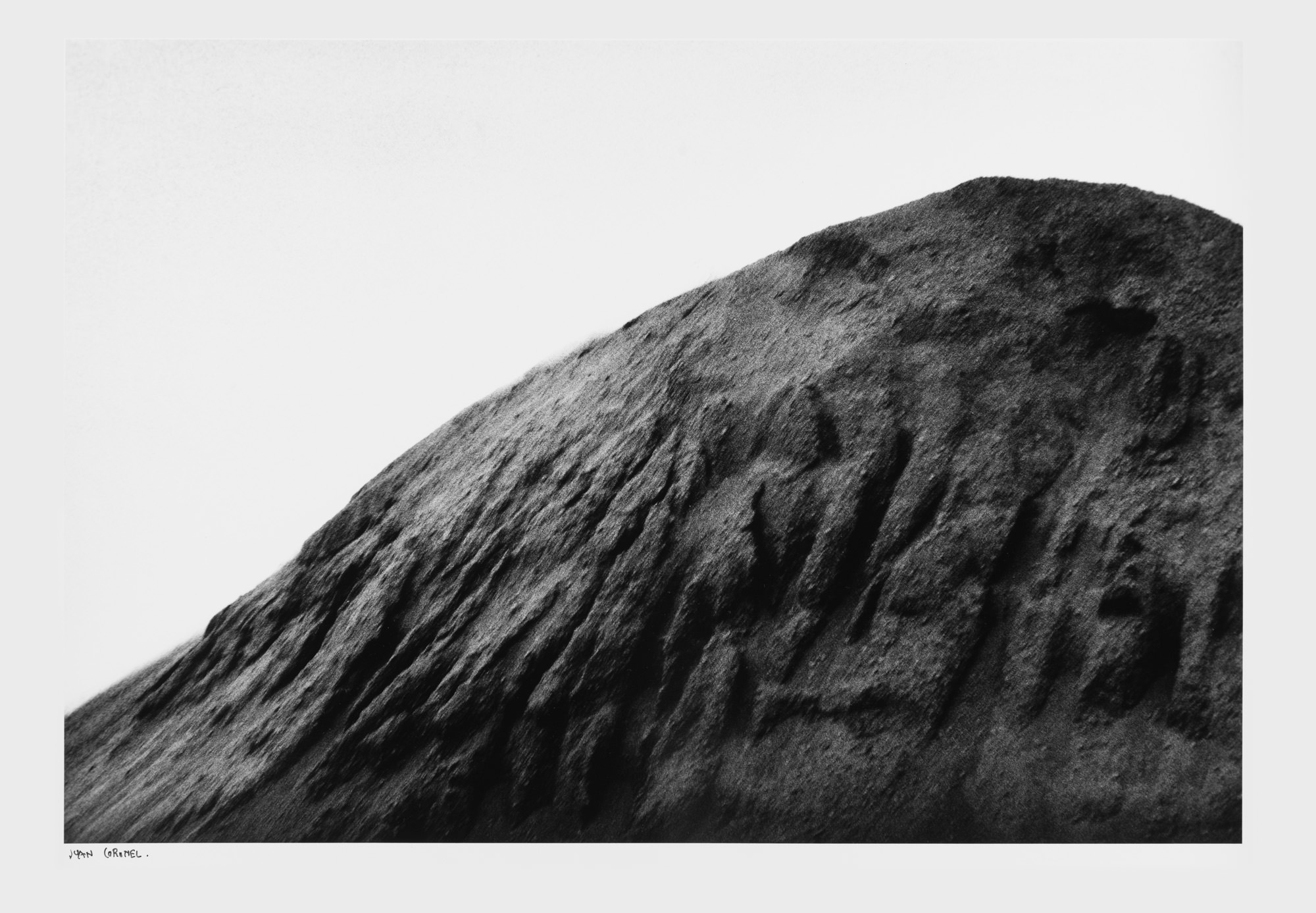Mentiras. Paisajes tentativos
Juan Rafael Coronel Rivera
curated by Alejandro Castellanos
Thursday April 20 - Saturday May 31, 2023
Juan Rafael Coronel Rivera, Poyauhtecatl, 1995 - 2022, 40.6 x 50.8 cm / 16 x 20” (paper), 43 x 56 cm / 16.9 x 22” (frame), Ed. 1/5 + 2 AP, Signed and numbered by the artist.
METÁFORA DE LA MONTAÑA
“In this see that” is Octavio Paz's invitation to look at the world poetically. It is convenient to appreciate in this way the photographs of Juan Rafael Coronel Rivera, whose creative system is based on an idealism that combines times and visions; that is, ways of understanding the world as a set of elements related to each other by the imagination, by the transposition of references from one place to another, from one object to another, from one form to another, from one story to another, from one language to another and from one image to another.
The small mounds that the masons make to place and join sand, cement, or stones – humble ephemeral components of the construction process – have served Coronel Rivera as a reference for another motif: the mountain, one of the keys to the pictorial genre of the landscape and an element geographic that is a sign and a myth.
However, Coronel Rivera's images are not paintings since they have not been elaborated following the tradition that, for Western culture, began between the 18th and 19th centuries, when European artists constantly represented mountainous landscapes. Instead, Coronel Rivera's imaginary comes from another place, from the mythical representations of the ancient cultures that inhabited the current Mexican territory that today, unconsciously, return to the memory of the builders when they make their small mounds with which they will later form houses or buildings.
The iconography of Juan Rafael Coronel Rivera originates in a very precise stage of photography that arose in the eighties of the last century, when documentary rhetoric was questioned by experimentation with the medium, generating new ways of thinking about images. Coronel Rivera’s mountains allude to a complex mental process developed by authors such as Laura Cohen or Gerardo Suter -whom Coronel Rivera appreciates as references in his beginnings in the complex art of photography-who went beyond the usual practice of photography, creating allegories when still he associated realism with truth and fiction with lies.
The photographic "lie" of Coronel Rivera, however, does not have the negative connotation that moralists apply to the medium (and which is still the basis of documentary film today), but rather how the sandy hills allow us to see what is beyond their image; that is, the metaphor of the mountain. “Mentiri," the Latin word from which the word "lie" comes, alludes to a conscious mental elaboration more complicated than the truth and, in the case of the series of Paisajes tentativos elaborated by Coronel Rivera, leads us to imagine not only his narrative but to create their own and to produce, from the memory of the myths associated with the mountain, new ways of thinking about what has been seen.
Together with two series presented in previous exhibitions (“Rituales atmósferas,” in 2000, and “Ce Acatl: cuando las piedras hablaron,” in 2005), “Mentiras. Paisajes tentativos” form a trilogy that ratifies Coronel Rivera's ability to capture the energy of constructive and architectural elements, transforming them into images where we can identify the signs he looks at as he wanders like the attentive flaneur he is. Furthermore, the immediacy of photography has enabled him to vividly capture the immense visual power of stone, that primordial, almost invisible element of such everyday life that exists in our environment.
Based on this component, the Mesoamerican civilizations built their most incredible legacy: the sacred cities where they dialogued with their gods. Coronel Rivera's "false" mountains refer us to the symbolic geography of the inverted cone that is Mexico, to its innumerable mountains, also false, in the shape of a pyramid, elaborated to look at the cosmos and recycle life.
Paul Westheim observed that the Mesoamerican pyramids, unlike those built in other parts of the world, have a horizontal alignment that roots them to the earth and gives them a narrative character consistent with that state. The photographs of Juan Rafael Coronel Rivera share this quality since they generate a visual space that can be seen as a complementary story to his literary and critical production. The metaphors of his poetry, stories, and essays on art are the parallel version of his iconographic work. The word and the gaze thus combine an actual work, a cornerstone on the horizon of contemporary Mexican culture.
Alejandro Castellanos

